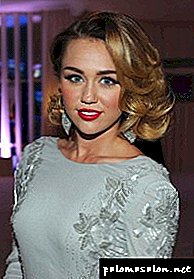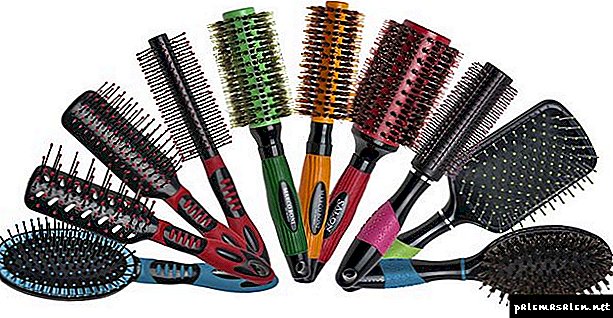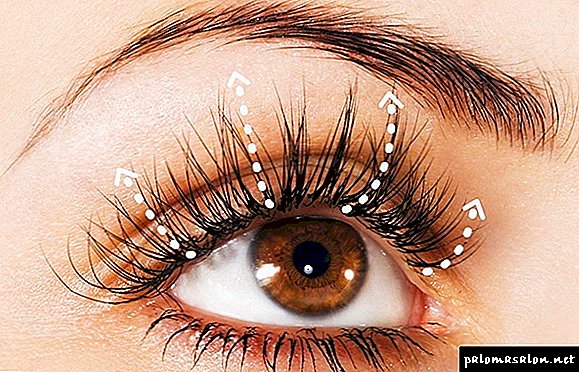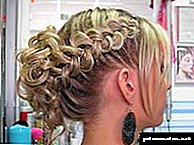Coloring has become one of the most popular trends of the new season. Today it is very fashionable to color the hair with bright colors.
And, despite the fact that a few years ago this trend would have seemed ridiculous, modern women of fashion prefer to experiment with bright hues, creating stunning images. Let's talk about the most fashionable coloring for short hair, and also discuss the fashion trends of the season.
It should be remembered that coloring of hair is a complete procedure for dyeing strands. If in the case of highlighting the hair you spend a gentle dyeing, the coloring involves the toning of the hair.

Coloring for short hair
First I would like to talk about fashionable hairstyles for short hair. As you remember, last season the bob hairstyle came into fashion, which today is very popular among young fashionistas and women 40-50 years old.
In fact, the bob refers to those hairstyles for which there is no age taboos. It is rather a universal haircut that goes for most women. The bob hairstyle is perfect for coloring hair.

Coloring for short hair

Coloring for short hair
In particular, most modern stylists recommend coloring in bright colors. In this case, you get an ultramodern hairstyle for hair.
Fashionable short hairstyle is another original option for creating a fashionable hairstyle with coloring. Today for stylists, stylists most often apply the technology of coloring with natural colors.
Coloring for short hair carried out depending on your preferences. So, for blond hair, toning hair with wheat, golden ashen and pink flowers is best. For brown hair, it is better to choose paints such as chocolate, black, gold, wheat.

Coloring for short hair

Coloring for short hair
For dark and black hair are ideal: purple, brown, burgundy, sand, red and blue. For owners of red hair a great option would be burgundy, red, gold and pink tones.
What hair coloring technique is in fashion today?
Today, most stylists tend to dye their hair a vertical type. In this case, you get stylish stripes or zonal hair coloring. However, you can spend and horizontal coloring of hair.

Coloring for short hair

Coloring for short hair
This technique of dyeing strands is most often used to achieve the effect of a leopard pattern, etc. For fans of extreme hair dyeing, you can try a stencil technique. In this case, you choose a specific pattern that the master puts on your hair.
Today, the most popular technique for coloring hair has been toning the tips of the strands. Many celebrities use horizontal coloring of the hair ends. In this case, you can choose a variety of shades. The most relevant colors of the season were blue and purple hues.
Coloring Benefits
 Coloring is one of the most difficult dyeing techniques, in which up to 20 different shades can be used. This is where the master and the client can allow themselves creative flight! Due to the game of close or contrasting colors, you can create discreet or creative images and refresh even such classic haircuts as page or square.
Coloring is one of the most difficult dyeing techniques, in which up to 20 different shades can be used. This is where the master and the client can allow themselves creative flight! Due to the game of close or contrasting colors, you can create discreet or creative images and refresh even such classic haircuts as page or square.
Qualitatively performed coloring allows you to:
- make the image fashionable and interesting,
- significantly increase the amount of hair,
- refresh your complexion, highlight your cheekbones,
- make eyes brighter
- hide early gray hair and whipped ends.
This is a gentle dyeing technique in which strands are damaged slightly (if it is performed without prior clarification). It looks good on straight and curly hair. The required length of the strands is minimal - even 5 cm is enough to colorize short hair.
Types and features
Initially, coloring was very similar to color highlighting - evenly scattered strands were simply painted in different colors. But now such a technique is rarely used - it makes the image too chaotic and goes not for everyone.
Today there are more than 10 types of coloring, most of which are suitable, including for short haircuts:
 Total - the whole hair is stained: initially in the base color, which is then diluted with several additional shades. Suitable for all ages, haircuts and hair type.
Total - the whole hair is stained: initially in the base color, which is then diluted with several additional shades. Suitable for all ages, haircuts and hair type.- Natural - when the master applies strokes of other shades to the natural hair color. The most gentle technique, recommended for thin and weak hair, masks gray hair well.
- Multitonal It looks like feathering of various shades - strands are wider than with other types of coloring. The colors can be close or contrasting, it looks very original.
- Transverse. With clear horizontal borders between color transitions. Looks beautiful only on smooth haircuts: square, sesson. The hair should be perfectly smooth - coloring emphasizes all the shortcomings of the hair.
- Zonal. Coloring is performed only on certain areas, as a rule, with longer hair: bangs, nape, emphasizing the elongation of asymmetrical parts of the haircut. Makes the image still very original and modern.
- Ombre. Also a transverse form of staining, but with a blurred border. Can be direct and reverse, soft or contrast. Usually only two, a maximum of three shades are used. With the right choice of their ombre suitable for absolutely everyone.
- Sombre. Delicate Ombre, with the most blurred transition. It looks perfect if you choose a natural color or a color close to it as the base. Perfectly hides gray hair and refreshes the image.
- Bebilight Soft coloring option that creates only light glare of 2-3 shades close to each other. The correct work of the master is almost imperceptible, but the effect of it is stunning - additional volume and freshness.
- Reservation. Emphasizing dark shades of hair with additional light, mostly in golden tones: copper, wheat, nut, chestnut, etc. The same technique can slightly darken brown hair, adding to them coffee, chocolate and brown shades.
- Pixel. One of the most modern methods, when the paint does not fall evenly, but with spots drawn through a stencil, resembling pixels on a monitor screen. It looks very bright and original, but requires an appropriate youth style in clothes.
 Stencil. On smooth dyed hair with a stencil is applied color drawing with one or more colors. Very difficult and expensive type of coloring, but it looks fashionable and beautiful. Properly selected design and shades allow you to refresh almost any image.
Stencil. On smooth dyed hair with a stencil is applied color drawing with one or more colors. Very difficult and expensive type of coloring, but it looks fashionable and beautiful. Properly selected design and shades allow you to refresh almost any image.- Crazy Colors. It can be translated as “Color Explosion” - a current youth trend in which contrasting and very bright neon hues are used. They can be applied to strands, separate areas of haircuts or through a stencil.
Techniques are very diverse and many of them are far from the original coloring. To describe all of them simply does not make sense. Moreover, most of the species can not be done qualitatively by yourself at home.
There are too many important details: from the choice of shades to correctly made boundaries of color transitions. Therefore, coloring is a procedure that should be entrusted to a professional.
Choice of shades
In many ways, the result of any staining depends on how correctly the color is chosen. In the case of coloring it is still more difficult - you need to correctly select additional shades to it.
An experienced master immediately "reads" the client's natural color type and focuses on it. This allows you to maximally emphasize the shade of the eyes and skin.
You should listen to the master's opinion, even if you have already created the desired image in your head. The result will not always meet your expectations - the colors you choose may not fit your natural shade or you may not be suitable, and a good specialist will surely tell about it and suggest alternative options.
Here are a few secrets from the professionals, allowing them not to be mistaken with the choice of paint:
- Red hair is difficult to completely repaint and almost impossible to bring in a cold range. But they are perfectly fit red, copper, chestnut and gold hues.
- Contrast coloration with the addition of cherry, wine, burgundy and even blue shades is perfect for black hair.
 Rose gold, which today is at its peak of relevance, falls only on a very bright head of hair, so light brown and darker hair will have to be lightened.
Rose gold, which today is at its peak of relevance, falls only on a very bright head of hair, so light brown and darker hair will have to be lightened.- Chestnut hair gives maximum open space for creativity, it goes well with almost all shades except blonde.
- Any shades of light brown are beautifully underlined by close complementary colors in the same palette: warm or cold.
- Holders of pale or olive skin are better suited to cool shades, and for dark skin or sand (especially with freckles) you need warm colors.
- With ashy shades, you need to be careful - in most cases they add age and highlight all the skin imperfections.
- On graphic haircuts, zonal, stencil or pixel coloring or wide highlighted strands look better.
- Cascading, torn and voluminous hairstyles beautifully accentuate thin strands that play in different shades.
- On very light or bleached hair, bright colors will look a bit extravagant, and it is rather difficult to wash them off, so you should think carefully before using neon or red resistant paints.
And more - the older the age, the less additional shades. On young girls it will be interesting to look at the game, even from 10-15 tones. 2-3 women are enough for mature ladies, but they should be in perfect harmony with their appearance.
As you can see, there are a lot of subtleties and secrets. No wonder coloring is considered one of the most difficult techniques. To learn how to do it correctly, good masters constantly attend training seminars conducted by leading brands.
Coloring features
Before you finally choose your coloring technique, you need to take into account a few more features of this type of coloring:
 in contrast to highlighting, it requires quite frequent correction - strands grow, lose their brightness, and toning with their balm is not always possible,
in contrast to highlighting, it requires quite frequent correction - strands grow, lose their brightness, and toning with their balm is not always possible,- Stencil, horizontal and pixel coloring requires perfectly smooth hair - you should lamination on it or you will have to constantly pull the hair out with an iron,
- older women are perfectly rejuvenated by a bob or a classic square with a good coloring, made in sober natural tones,
- if the hair is badly damaged, then it is necessary to treat it before dyeing, otherwise the paint will be washed out of the porous structure too quickly and the hair will look faded,
- on a very gray head, it is better to perform the procedure in a cold range and using a maximum of three shades - otherwise it will be difficult to correct,
- A small amount of gray hair better hides coloring with thin strands - it looks the most natural, including when the paint is partially washed off.
At home with complex techniques, we strongly advise not to experiment. Even if you have found a detailed description of them, note that the coloring scheme is only an approximate instruction, and the master controls the entire process carefully at each section of the haircut. And to bring the hair into a smooth tone after an unsuccessful coloring is almost impossible.
Home care
After any staining, the hair is damaged and needs extra care. And although most types of coloring can be attributed to gentle techniques, respect for the hair is a guarantee that they will remain alive and shiny.
Tips from the masters are quite simple:
 for washing, it is advisable to use professional soft shampoos marked “color preservation” and balms from the same line,
for washing, it is advisable to use professional soft shampoos marked “color preservation” and balms from the same line,- once a week, apply a quality mask for colored hair, and the home ones are not suitable - most of them contribute to the leaching of pigment,
- so as not to spoil the hair, ask the master to make coloring with a sparing non-ammonia paint, they are also safer with frequent correction,
- curling iron and iron - the main enemies of colored hair, hot styling should be done as rarely as possible,
- it is advisable to dry the hair at low temperatures and be sure to complete the procedure with a hot blow.
- the color is washed out fastest in the occipital zone - in front your hairstyle may still look quite decent, and in the back - faded, keep this in mind when choosing the time for correction
- the pigment is destroyed more quickly by exposure to chlorinated water and ultraviolet - hair should be protected from them,
- for any staining the tips suffer the most - they should be regularly fed with oils and trimmed every 2-3 months.
Ask the master how tinted balm you can maintain the color intensity of your new hairstyle. If there is a possibility of home toning - this will allow you to make a correction every 2-3 months, and not every 4-6 weeks. And when the stylish coloring get bored - do not try to remove the remnants of it yourself - go to the salon and ask the master to make a wash. Otherwise, you run the risk of being left without hair or with dull faded hair.
Who is suitable for how it will look like
Coloring is the coloring of the strands in different shades. (there may be from 2 to 10), thanks to which a short hairstyle looks more stylish, bright and creative.
In contrast, long dyeing of short hair is most often done in a longitudinal way.
Consider the features of technology, depending on the hair color and haircut features.
Light short curls can both darken and lighten. By adding light strands, you can make the curls visually thicker.
Of the current techniques for blondes, there is a bebilites, in which an artificial similarity of glare from the sun is created in the hair.
Coloring on very short blond hair under the boy, photo: 
Dark-haired girls with creative short haircuts You can add brightness to your hair, using shades of wine, cherry, red, violet, blue for coloring.
Coloring for dark hair, short hair, photo: 

Blonde ladies can experiment with both natural shades, and with bright saturated variations of multicolor painting.
Keep in mind that for some tones you need to lighten up your hair, so think about whether you are hurting her too much.
Coloring for short blond hair with bangs, photo: 
Hair length must also be taken into account.. The shorter the hairstyle, the more responsibly you need to approach the coloring.
Lateral paint applied to achieve a beautiful overflow.
Curls for this are divided into zones, and each strand is stained with 2-3 colors of paint. As a result, we get not too catchy and completely natural coloring. The longer the hairstyle, the more open spaces for fantasy you have.
When haircuts for a boy and other short ones, it is better to limit to barely noticeable modulations. Haircuts like bob or square can be varied with creative ombre.
How to make a hairstyle with a bagel for long and medium hair can be found in this article.
What is the French highlights on light brown hair: photos and videos can be found here.
Choice of colors
When choosing a shade is to navigate not only on fashion trends, but also on the native hair color and appearance features. As for trends, naturalness is in fashion.
Of course, other options are acceptable. In any case, the selection of colors follow the following recommendations:

- in the case of some fashion tones, a certain base is needed. For example, shades like pink gold look good only on blondes, so if the curls are dark, then they will have to discolor,
- red-haired girls can add copper or gold highlights to their hair,
- brunettes suit wine, cherry tones,
- color for coloring, as well as his way, should be combined with a hairdo. If you have a haircut with clear geometric lines, you can emphasize them with contrasting tones, and soft diagonals are better to highlight with neat longitudinal highlights,
- warm colors are better suited for girls with dark skin and freckles. Cold, on the contrary, will create a beautiful contrast with fair skin,
- Today, ashy and silvery tones are popular for multicolor coloring. Note that they are well suited only for blondes and fair-haired. Also similar shades require clean and healthy skin.
How to make a beautiful coloring on short hair, photo before and after: 
Hairstyles for round face on medium hair will be found in this material.
Reviews about home lamination hair gelatin look here. As well as useful tips on the procedure.
How to do at home: step by step instructions
If you are not confident in your abilities, it is better to paint in the cabinbecause this technique is not the easiest. However, those who have certain skills can do the procedure at home.
For staining, prepare the following:

- several non-metallic containers in which you will mix paint (how many tones will be used, how many need and containers),
- rubber gloves,
- paint brush
- a scallop with a sharp tip that will help separate the strands,
- dyes (you can buy a few different ones or a special set intended for coloring),
- foil or food film.
The very same procedure of coloring at home for short hair is performed in accordance with the following instruction:
- mix colors and place them in different containers. If the curls are dark, they may need to be lightened,
- cover the neck and shoulders with a towel
- Apply a fat cream on the forehead and temples so as not to stain the skin,
- wear gloves
- Separate the strand you want to paint with a comb, apply paint on it. Then wrap the strand in foil,
- if you plan on coloring most of the curls, separate them by strand and dye them in different tones,
- all strands are wrapped in foil,
- strands should be no more than 5 mm wide,
- wash strands alternately. Open the foil and place the strands under running water,
- when the paint is washed off, apply a nourishing balm on the curls.
Coloring for short hair, video lesson:
There are other options for coloring. For example, you can paint only the tips or the root zone, make a creative ombre or barely noticeable balayazh.
remember, that the more colors you want to use, the harder it is to perform the procedure at home, therefore, better evaluate your strength in advance.

 Total - the whole hair is stained: initially in the base color, which is then diluted with several additional shades. Suitable for all ages, haircuts and hair type.
Total - the whole hair is stained: initially in the base color, which is then diluted with several additional shades. Suitable for all ages, haircuts and hair type. Stencil. On smooth dyed hair with a stencil is applied color drawing with one or more colors. Very difficult and expensive type of coloring, but it looks fashionable and beautiful. Properly selected design and shades allow you to refresh almost any image.
Stencil. On smooth dyed hair with a stencil is applied color drawing with one or more colors. Very difficult and expensive type of coloring, but it looks fashionable and beautiful. Properly selected design and shades allow you to refresh almost any image. Rose gold, which today is at its peak of relevance, falls only on a very bright head of hair, so light brown and darker hair will have to be lightened.
Rose gold, which today is at its peak of relevance, falls only on a very bright head of hair, so light brown and darker hair will have to be lightened. in contrast to highlighting, it requires quite frequent correction - strands grow, lose their brightness, and toning with their balm is not always possible,
in contrast to highlighting, it requires quite frequent correction - strands grow, lose their brightness, and toning with their balm is not always possible, for washing, it is advisable to use professional soft shampoos marked “color preservation” and balms from the same line,
for washing, it is advisable to use professional soft shampoos marked “color preservation” and balms from the same line,

